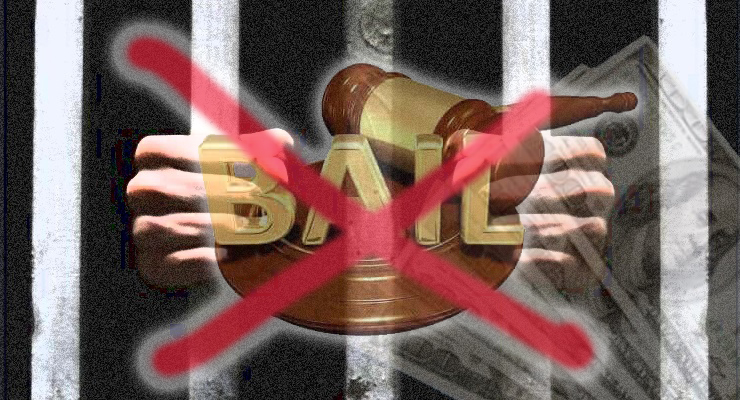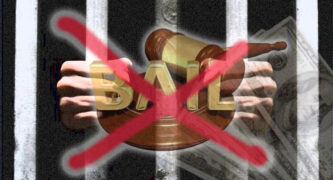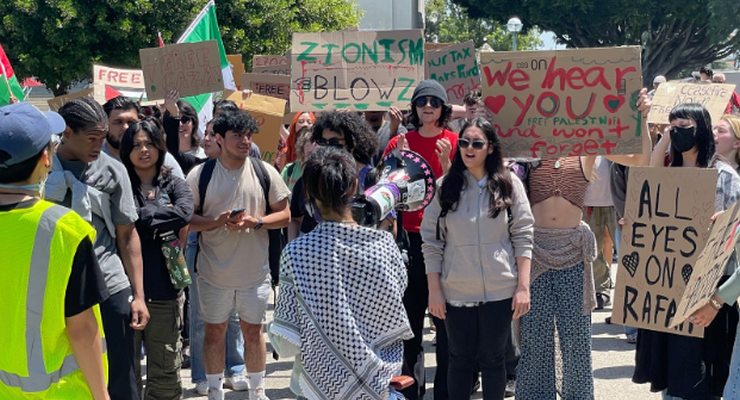
Los Angeles County’s zero-bail system, which was implemented Oct. 1 amid concerns from some law enforcement and elected officials, has worked “exactly the way it was intended” and has not decreased public safety, Superior Court officials insisted Monday as they released data on the system’s first three weeks of operation.
Most notably, the report compiled by the court found that less than 3% of people who have been booked on suspicion of a crime were subsequently re-arrested and booked again during the first three weeks of the Pre-Arraignment Release Protocols, or PARP, system.
In September, Pasadena Police Chief Gene Harris said the change would not impact arrests by local police officers.
“With our commitment to the community, we will continue to arrest where necessary and let the aftermath take care of itself,” Harris said in the video update. “But our service to you, our commitment is to make sure we are removing criminals from the street and making sure that we’re providing that quality of life and the ability for people to enjoy their visits and businesses while here in the city of Pasadena.”
On July 18, the Los Angeles County Superior Court approved the new zero-bail policy.
The zero bail schedule will apply to misdemeanors and certain non-violent felonies. It is due to go into effect on Oct. 1 across the county.
“The preliminary PARP Report released today demonstrates the undeniable public safety benefits of utilizing individualized risk determinations to assess conditions of release, as opposed to basing conditions of release solely on an arrested individual’s ability to pay traditional money bail,” Presiding Judge Samantha P. Jessner said in a statement.
“This new system is working exactly the way it was intended — the vast majority of those determined by a magistrate to be a significant risk to public and victim safety, or a significant flight risk, are being temporarily held in jail prior to arraignment, while the vast majority of those who pose little risk to public or victim safety and are likely to return to court are being released with non-financial conditions.
“Under the previous money bail system, these same high-risk individuals would be able to buy their release from jail if they had access to money, and the low-risk individuals would remain in jail for days, weeks, months, or even years if they did not have access to money to purchase their release.”
The zero-bail system largely eliminates the existing cash bail system for all but the most serious of crimes. Most people arrested on suspicion on non-violent or non-serious offenses are either cited and released in the field or booked and released at a police or sheriff’s station with orders to appear in court on a specific date for arraignment once they are actually charged with a crime.
Arrestees who are believed to present a heightened threat to the public or be a flight risk are referred to a magistrate judge, who reviews the case and determines whether the person should be held in custody pending arraignment or released under non-financial restrictions such as electronic monitoring.
Once a person is charged and appears in court for arraignment, a judge could change or revoke the defendant’s release conditions.
Some law enforcement officials, including Los Angeles County Sheriff Robert Luna, expressed concern about the system before it took effect, saying it would reduce public confidence in the justice system by quickly releasing people arrested for a variety of offenses.
More than a dozen Southland cities have filed a lawsuit seeking to overthrow the zero-bail system, saying it would be detrimental to public safety.
Superior Court officials on Monday, however, said the arrest data from the program’s first three weeks belies those concerns. Jessner called claims that the system is harmful to public safety misinformation and “dangerous and negligent rhetoric.”
The report released Monday analyzed 5,113 bookings that occurred between Oct. 1, when the new system took effect, and Oct. 21.
According to the report, 40% of those bookings were for more serious offenses that were ineligible for zero-bail consideration. A total 1,213 cases were referred to a magistrate judge for further review, and of those, 64% of the arrestees were ordered to remain in custody pending arraignment.
The report found that 85% of people released under the zero-bail system were considered low-risk offenders, while 71% of the people held in custody pending arraignment were considered medium- to high-risk.
The report found that only 2.5% of people who were booked during the first three weeks of the program were subsequently re-arrested for another offense and re-booked. Of that 2.5%, nearly half of the re-arrestees had been arrested for a serious or violent crime and were free only because they posted cash bail. Only two people who were released after a review by a magistrate judge were re-booked during the first three weeks of the program, according to the report.
“Despite a significant amount of misinformation circulating regarding the new bail policy’s impact on public safety, we are encouraged that the first three weeks of data reveal the new system is actually keeping communities safer,” Superior Court Executive Officer/Clerk of Court David W. Slayton.
“By providing individualized risk assessments for many of those arrested in Los Angeles County prior to their release, rather than arbitrarily releasing individuals based on whether they can afford a certain amount of money bail, this new system better ensures that those who present a significant risk are held while those who present little to no risk are released prior to trial.”
The new system was developed in response to long-held criticism that traditional cash bail favored the rich, meaning well-heeled people arrested for even the most serious of crimes could pay their way out of jail, while low-income people languished behind bars for far lesser offenses. The new system is based not on cash, but on the risk an offender presents to public safety or the possibility the person might fail to appear in court.
The county implemented a zero-bail system during the COVID-19 pandemic in an effort to prevent crowding in jails. Then in May, a Los Angeles judge issued a preliminary injunction essentially reinstating the system by ordering an end to cash bail by the Los Angeles police and sheriff’s departments.
The Los Angeles Superior Court in July announced plans for the PARP system, with Jessner saying, “A person’s ability to pay a large sum of money should not be the determining factor in deciding whether that person, who is presumed innocent, stays in jail before trial or is released.”
But the idea of zero-bail generated public safety questions. Several members of the county Board of Supervisors said last month their offices had been swamped with calls from residents concerned about the system, particularly following a recent wave of mob-style, smash-and-grab burglaries and reports of suspects in those crimes being arrested but then quickly released, only to commit new crimes.
Some residents told the board during a meeting last month, however, that suggestions crime would increase under the system constituted “fear mongering.” They accused zero-bail opponents of manufacturing statistics in an effort to “sustain the current policies that do not work.”














 0 comments
0 comments


